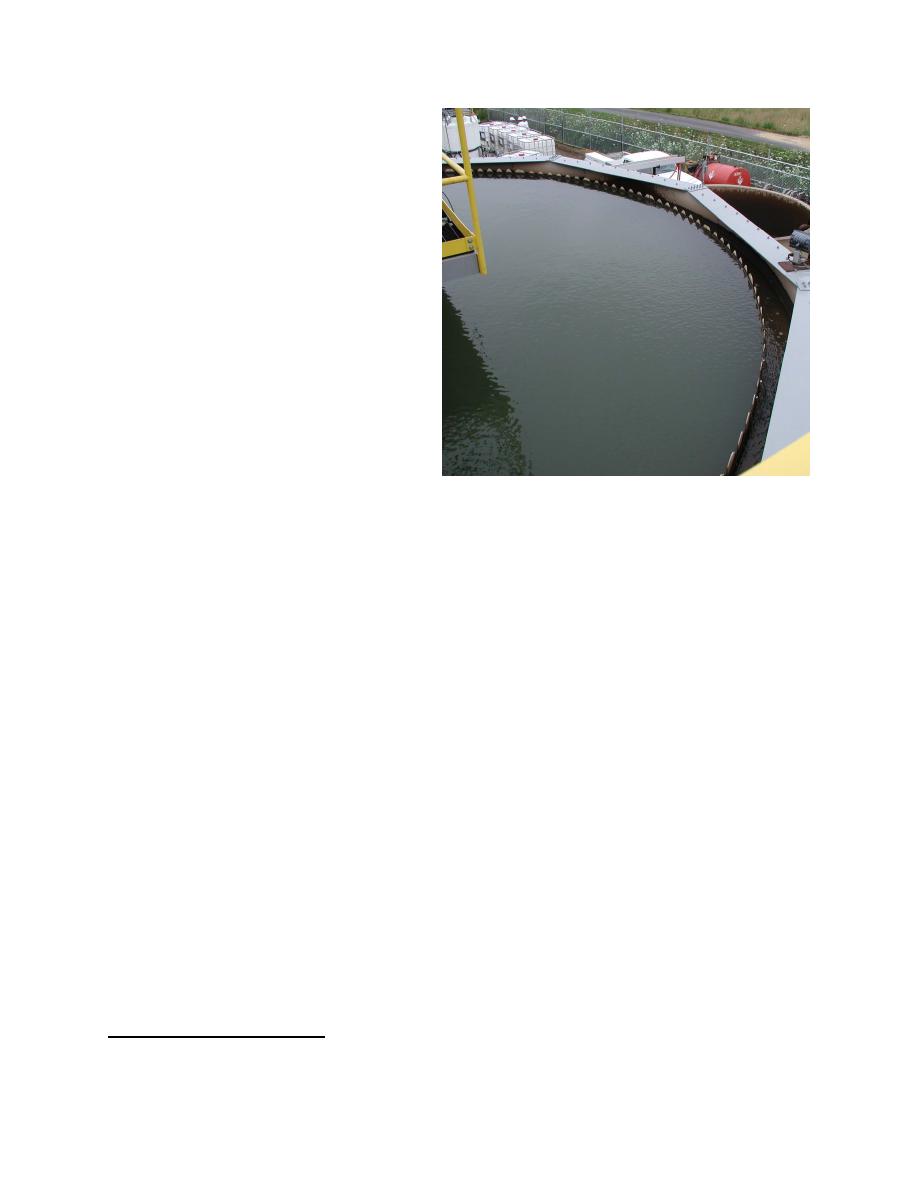 |
||
|
|
||
| |||||||||||||||
|
|
 ERDC TN-DOER-T7
October 2004
Clarifiers/Thickeners.
High rate,
circular
clarifiers/thickeners
are
appropriate for a wide variety of dredged
sediment slurries. Typically, suspended
solids are increased from 10 to 20 percent
dry solids in the influent, to approximately
30 percent solids in the underflow, greatly
reducing the slurry volume in the process
with this equipment. At the same time,
clarified water overflows a weir and is
available as process water or is returned to
the receiving water body (Figure 5).
Polymers are required to accelerate
sedimentation and optimize clarified water
quality. Features include the ability to
process a high volume of solids without
fouling, minimum space requirement,
rugged construction, and low SS in the
overflow (15-30 mg/l).
Figure 5. Circular clarifier
When used to thicken feed for a belt filter press, additional polymers may be added to the
underflow, or the solids may need some dilution to meet optimum feed concentrations to the
press. Solids can be continuously stirred to maintain pumpability during system shutdown, a
significant advantage over lamellar clarifiers. Lamellar, plate-type clarifiers are frequently used
for lower concentrations of suspended solids, emphasizing the need for clarification of the
overflow water, rather than for the thickening of the underflow. Polymers are required, and the
plates are sometimes subject to solids build-up and plugging, especially when applied to heavy
concentrations of sticky solids.
As a processing alternative, the clarifier may be used as the principal dewatering component.
Operated for maximum thickening, a circular clarifier can produce a pumpable underflow of up
to 40 percent solids. These partially dewatered materials can then be placed in a containment
area for further consolidation. Although a temporary dewatering area would be required, this
might be a more cost-effective alternative than mechanical dewatering. Clarifier capacity can be
increased at less cost than press capacity, enabling the use of larger dredges for which labor costs
are comparable to smaller dredges. Additionally, the dredge can operate more continuously if
the capacity of the rate limiting components is increased. This reduces the length of time the
Polymer Mixing and Injection Systems. Dry or liquid polymers (nonionic, anionic or
cationic) are available for thickening and/or dewatering dredged sediment slurries. To
economically justify more capital-intensive dry systems, the polymer requirements must be very
substantial because of the solids throughput in the system or because of the large size of the
processing system. Small, packaged systems blending neat polymer with water and then
1
Personal communication. May 13, 2004, Vic Buhr, Division Manager of Hydraulic Dredging and Dewatering, J.F.
Brennon Co., 820 Bain Bridge, LaCrosse, WI 54602-2557.
6
|
|
Privacy Statement - Press Release - Copyright Information. - Contact Us - Support Integrated Publishing |